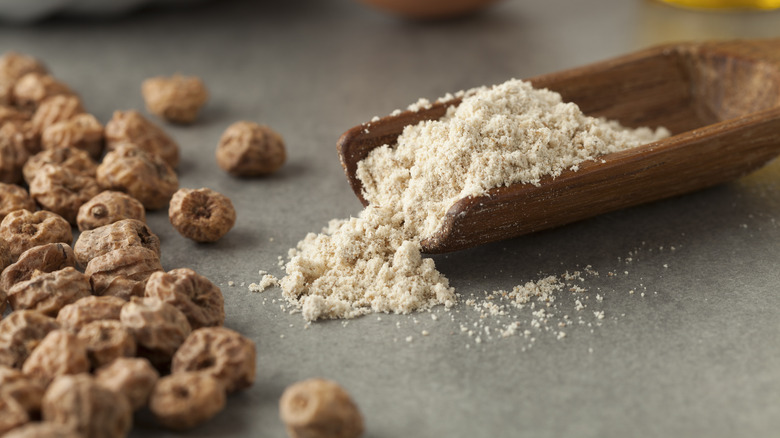The Step You Should Take Before Baking With Tiger Nut Flour
While tiger nut flour is relatively newer to the gluten-free section of the baking aisle, tiger nuts themselves have been around since ancient Egypt. According to NPR, they were used medicinally as well as seen as a delicacy, and even found buried in the tombs of some Egyptians.
No, tiger nuts are not made from tigers, nor are they made from nuts. They are a tuber, which serves as the underground storage unit of a plant, housing all the nutrients needed for the next growing cycle (via Master Class). It should come as no surprise then that they're nutritious, containing unsaturated oils, starch, and protein.
Tiger nuts ground into flour have become a favorite amongst paleo and grain/gluten-free enthusiasts, as well as with the nut allergy community for several reasons. It's a pretty easy flour to use and comes with some tasty benefits, but there is a step you may want to add that you would otherwise probably skip with other flours. What do you need to know before swapping in tiger nut flour in your next baking project?
A quick sift will do
Tiger nut flour is a great 1:1 swap-in for any recipe that calls for regular, all-purpose flour. Or pretty much any flour variation, for that matter. It has a beautiful, nutty-sweet taste, and a heartier, chewier texture that can elevate any muffin, bread, or cookie. The one catch? Tiger nut flour has somewhat of a grittier, sandier texture. The best way to combat this difference is to pass it through a sieve or sifter, to yield finer flour than what comes out of the bag. Sifting will also remove any lumps in the flour.
The amount of grittiness may vary from brand to brand. Many tiger nut flours are made by grinding up the whole tiger nut, skin included. Others may use the pulp left after making tiger nut milk, per Luvele. Much like the difference between almond flour and almond meal, the inclusion or exclusion of the skin will yield slightly different flours. But, a quick sift will solve that.

